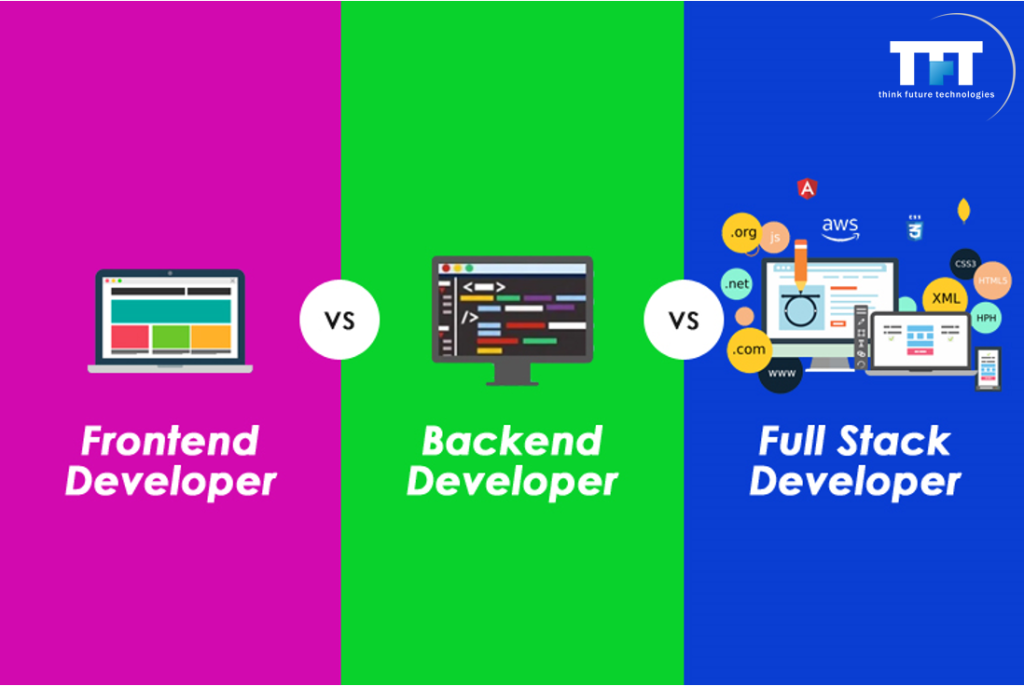Each developer at least once thought about which direction to choose, front-end, back-end or full stack.
And today we will figure out which direction to choose.
In fact, there is no single correct answer. One direction of development is suitable for someone, someone else. Everything depends on you.

What is a web developer?
The first thing you need to understand, first of all, is what a web developer is.
A web developer is not one thing, but many things: spanning multiple skill sets that translate into different specialties.
The three most common terms used to refer to these specialties in general terms are front-end, back-end, and full stack.
In this article, we will try to define each of them and see their differences.
If you are just looking for a strong and reliable developer, then you can always turn to https://fireart.studio/trusted-node-js-development-company/.
Interface Developer
Works on the client side, in the browser, on the side of what is visible.
It mainly concerns the external components of a website or web application.
As a result, they must be sure to master HTML, CSS and JavaScript:
Interface programming languages
HTML: Hypertext Markup Language is a key structural component of all Internet sites. Without it, web pages cannot exist.
CSS: Cascading Style Sheets is what provides the style for HTML, and is responsible for the presentation layer.
Getting good at CSS and its capabilities is more difficult than it might seem at first glance.
JavaScript: Using only HTML and CSS your web pages will be static, while with JS your web pages will become interactive.
Front-end developers are usually concerned with design principles and page structure.
However, a web developer goes further than a designer.
Obviously, you have to consider the usability and readability of a page or web application, but as a good programmer, you know that your work will be done on the client side, in most cases, in the browser.
Moreover, nowadays things go much further, as the capabilities of browsers have turned them into true “operating systems” of the Internet with advanced APIs.
New versions of the ECMAScript language, a lot of development tools (npm, yarn, webpack…), as well as metalanguages (Sass, TypeScript…), which makes it a rather complex discipline.
What is a back-end developer
The backend developer works on the server side, behind the scenes, allowing the user to enjoy their work.
Languages and frameworks used in the backend
To be a server side programmer, there are many languages and frameworks to choose from, it will all depend on the company you end up with.
The most common:
ASP.NET: Microsoft’s web development platform. Widely used in companies. It has Web Forms and MVC options, and now also ASP.NET Core MVC.
PHP: For example, the famous WordPress content manager uses PHP. Laravel is one of the platforms used with this language.
Ruby: along with the Ruby on rails framework.
Python: easy to learn. Often used with Django as a framework.
Node.js: It’s getting more and more popular because it uses the same language as the client side: JavaScript.
Java: A classic language and one of the most sought after. For web application development, it is usually used in conjunction with such frameworks.
However, it is not enough to master the language and the framework. Every web application needs to store data in some way.
Therefore, the backend developer must also be familiar with databases. Among the most common:
SQL Server
mysql
Oracle
PostgreSQL
MongoDB which is a non-relational data store or NoSQL data store.
Full stack developer
In most web pages and applications, the resulting errors occur on the server side. Who is responsible for this part?
A back-end developer, who by this point in his position has already exhausted himself, so it’s better not to demand anything more from him and look for someone who, in addition to the above, has knowledge of server architecture and systems.
And this person is a full stack developer.
A versatile programmer responsible for project development, from building servers to designing with CSS.
This type of scheduler was popularized a few years ago by Facebook’s technical department.
It’s nearly impossible to be a good full-stack developer these days.
As a rule, programmers who call themselves full-stack are more focused on one of two parts, that is, they dominate one of the parts and have just enough ideas about the other to protect themselves in everyday life.
These profiles usually work in smaller companies where they are single-handedly responsible for all web development.
As you can see, web development has many aspects that also evolve over time.
So don’t force yourself and don’t try to learn everything at once.
Remember that in most of your work you will not be alone, but will become part of a team in which your role will be clearly defined.
So choose where you want to develop your career (client or server) and focus on learning and improving your web development skills and knowledge in a focused way.
Don’t be intimidated by the many new things that come out every day, and you’ll see that with persistence, you’ll become a pro.
Regardless of the type of web programmer you choose, if you want to stand out from your peers, don’t forget to develop your social skills.
The most important of these are: the ability to learn quickly, the ability to solve problems effectively, attention to detail and, of course, ease of communication.
Have a look at Is CSM® A Good Course?, How Many Working Hours in a Year?, 5 Top Tips To Manage Your Remote Teams Successfully & 8 Practical Tips on How to Pay off Your Student Loans.



